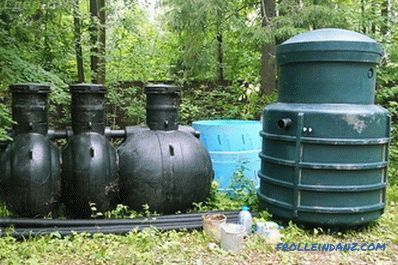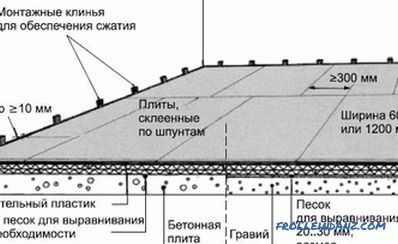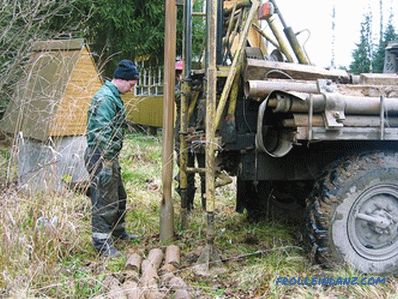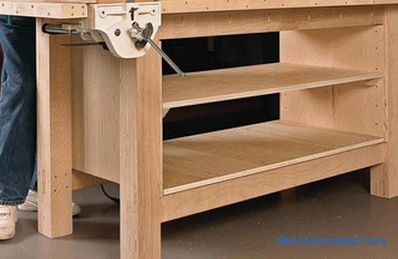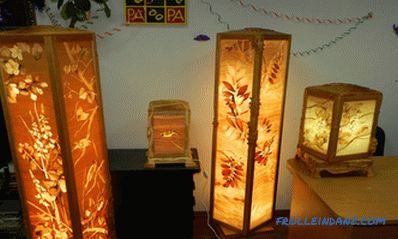In order for the result of the repair work to be organized with its quality, all its stages must be treated as responsibly as possible. In this case, little things do not happen, especially when it comes to working in the bathroom.
The thing is that quite extreme conditions are created in this room during its operation. This refers to high humidity, rather large amplitude of temperature fluctuations. That is why the choice of suitable materials for finishing is a rather complicated task, and it is also necessary to take into account that almost all of them require the most even base for installation.
Work Methods
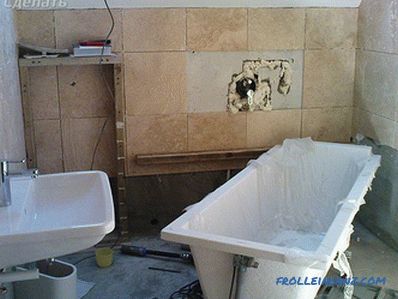 Repair in the Bathroom
Repair in the Bathroom
There are several ways to align walls, and they can be divided into two large groups.
- Leveling with blends.
- Alignment with sheet material.
Each of these options can be applied depending on the specific situation. For example, if it is decided to use ceramic tiles as a finishing material, it is better to level the walls with mixtures. Conversely, if you plan to paint the walls, it would be better to use sheets of drywall. To fully understand the essence of the process, each of the options for the work should be considered in more detail.
Alignment with a mixture of
Preparation
 Remove tiles from walls
Remove tiles from walls
At this stage it is necessary to dismantle the old coating, if it was and clean the surface from dirt. Do not forget that if any lamps or other decorative elements were installed on the walls, they should be dismantled. It is also worth remembering that the surface intended for leveling should be treated with antiseptic compounds. This will not only protect the walls from the occurrence of fungus, but also increase the adhesion of the mixture to the wall, which will be beneficial in terms of the quality of the work.
Marking
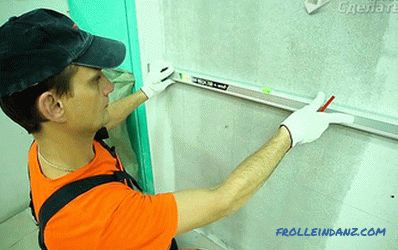 Marking the wall before installing the beacons
Marking the wall before installing the beacons
After preparing the surface, needs to be tagged. For these purposes it is convenient to use a laser level, but it can be done with a simple plumb and construction level. These tools are available and effective. It is necessary at a distance of one meter from each other, draw vertical parallel lines over the entire surface of the walls. Using a laser level, you can easily check how smooth the walls are by finding the maximum bulging points - this is clearly shown in the attached video. If you work in the old-fashioned way, you will have to mark with the help of the water level and align the beacons along the horizontally stretched thread, which is more laborious.
Installing beacons
 A simple way to install beacons
A simple way to install beacons
After the markup will be it is put, it is necessary to establish special beacons on which alignment of surfaces will be carried out. As these elements, you can use, for example, profile slats, which are usually used when installing battens for any coating. The slats of the required length are mounted on the walls as follows:
- First, the mixture is prepared. To this end, cement and sand are mixed in a proportion of 1 * 3 and diluted to a viscous but dense consistency.
- Then, using a construction trowel, this mixture pounces on the walls along the previously marked lines. The bottom line is that the work results in a series of small tubercles of the mixture. The distance between them should be approximately equal.
- After that, the slats are laid on these hillocks and slightly pressed. It is necessary with the help of the level to make sure that they are in the same plane.
If you undertake a job without a certain experience, it is better not to use a solution with the addition of gypsum to install the beacons, since it will grab more quickly than you will have time to level the beacon.
Alignment
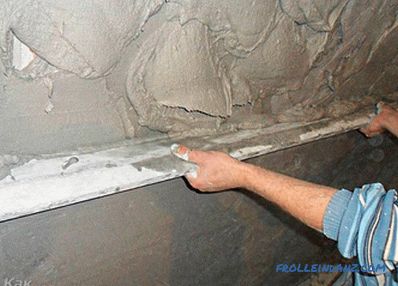 Plastering the beacons
Plastering the beacons
After the beacons will be installed, you can proceed directly to the alignment. For these purposes, the same mixture of cement and sand is prepared, with the only difference being that some building glue can be added to it to achieve greater plasticity and hardness. The essence of the work is that the space between the beacons is filled with a mixture, after which, using the rule (you can use a segment of the same rail), the mixture is leveled. The rule moves down the lighthouse plane, thereby smoothing and leveling the surface. After the leveled mixture hardens a little, the lighthouses should be removed, and the space remaining from them should be filled with the mixture.
Alignment with drywall
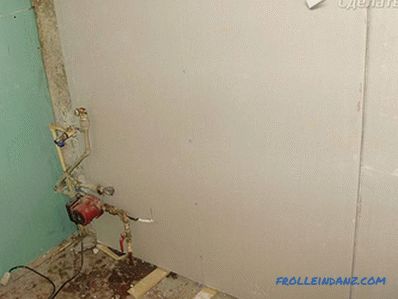 Alignment of walls with drywall in the bathroom
Alignment of walls with drywall in the bathroom
Another option is the alignment of the walls, using sheets of moisture-resistant drywall. Here it is still simpler:
- First, the walls are mapped.As in the previous case, you need to mark the vertical lines.
- Then, fasteners are mounted along the lines. To do this, you must first drill holes in the wall. Use in this case, the punch is quite appropriate. Dowels are driven into the holes.
- Metal profile rails are fastened on them. It is important to remember that it is necessary to ensure that the elements are in the same plane, for which it is worth using the building level.
- Material sheets are screwed to the rails.
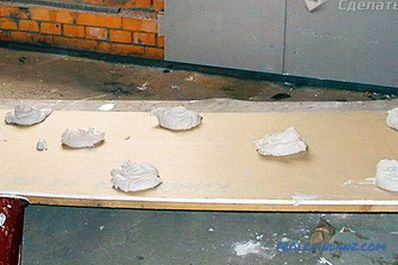 Sticking drywall
Sticking drywall
It is important to remember that if you decide to use drywall, you must choose only moisture resistant option. In addition, you can add that if the wall has minor irregularities, then the sheets of drywall can not be screwed, but simply stick directly to the walls. So you can greatly reduce the time of work and facilitate them. But this can be done only with small irregularities and a difference in surface heights of no more than 3.5 cm per m 2 .
If the wall is too large, it should be prepared by roughly leveling it with a cement-sand mortar.
Only a responsible attitude to work will allow us to speak with confidence about the reliability and durability of the result.
We advise you to read:
- how to assemble the corner shower;
- to restore the bath with enamel with your own hands.
Photo
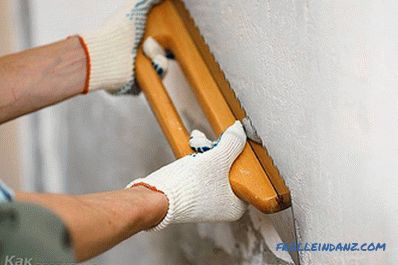 Plaster for tiles
Plaster for tiles
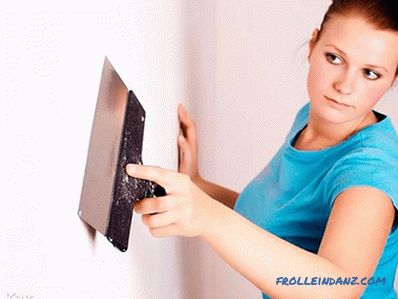 Putty
Putty
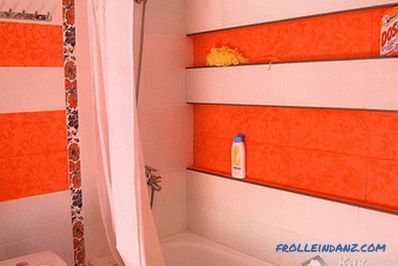 Bright bathroom
Bright bathroom
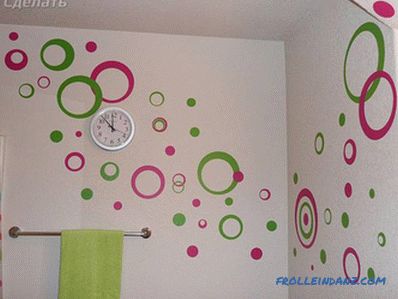 Patterns on the wall in the bathroom
Patterns on the wall in the bathroom
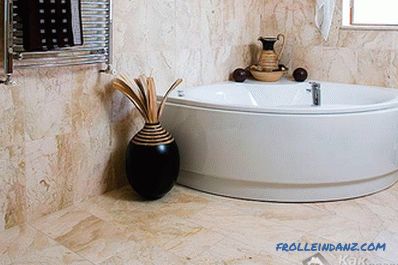 Tiling
Tiling
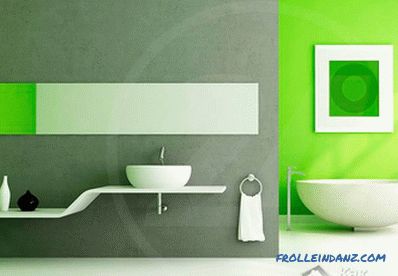 Painted with different colors
Painted with different colors
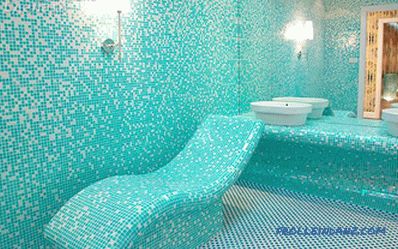 Mosaic in the bathroom
Mosaic in the bathroom
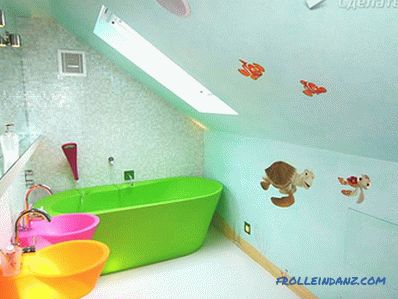 For children
For children
Video
This video demonstrates the process of plastering walls on the beacons:
See how the walls are leveling by gluing drywall to them:
